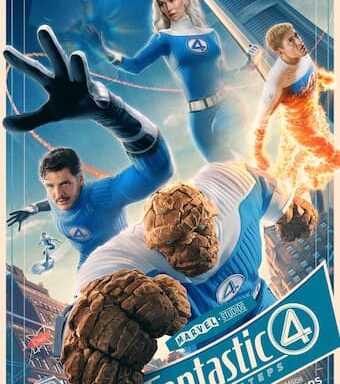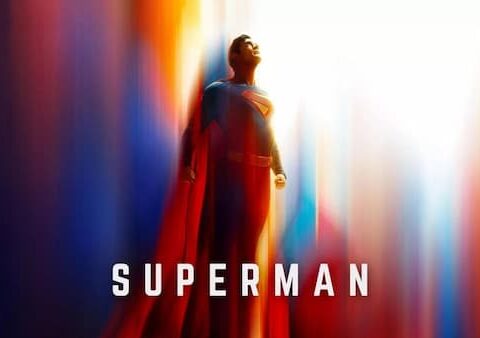Uncanny X-Men Annual #1 is pretty much essential reading, given how much it ties in to so much else that’s happening in the X-Men books.
Including the Extermination saga (reviewed here), the whole run of the Uncanny X-Men title (reviewed yesterday), and the Age of X-Man mega-event that is now happening.
It was at the very end of the Extermination series, after the time-displaced kid X-Men were sent back to their original time, that we discovered Kid Cable had been secretly collaborating with an apparently alive Scott Summers the whole time.
It’s in this book that we get to backtrack and see what the story was there.
A lot of how much you like this stuff might depend on whether you think Cyclops being brought back from death is a good thing or not. I’m pretty neutral on that. It seems like only a week ago he was killed (in the Death of X event, which I hated).
But, accepting the premise that Cyclops is back from the dead, does Uncanny X-Men Annual #1 tell a good story?
On the whole, yes. Ed Brisson manages to take the concept (Cyclops is resurrected) and make this story do a lot of things effectively. It ties in with other stories very well (at the end, we’re shown the climatic events of Uncanny X-Men #10 now from Scott’s perspective). It grounds itself in X-Men history very well, and just just recent(ish) stuff like the Death of X and Phoenix Resurrection.
And it establishes where Cyclops is now and how he is going to figure into the current situation (which we already saw hinted at elsewhere).
It does all of that really well: this feels like something of a love letter to Cyclops as a character. And grounding this story to a simple, minor event from really long ago (a random person who Cyclops once saved from harm) and then having it play a key role in the present situation is really good storytelling, really linking up different eras of X-Men or Cyclops history really nicely.
I really liked the old-school, retro format of the scenes set in the past: it really makes you feel the nostalgia, before it brings you firmly back to the contemporary art-style of the present narrative.
It’s nice, thematically, that the message seems to be that a hero like Summers has helped so many people over the decades – so many that he probably doesn’t even remember most of them. But that, sometimes, those good deeds can come back around to reward you.
As for the actual details of how Cyclops is literally raised from the grave… the less time spent analyzing the techno-babble the better. Infinity coils, phoenix force, blah blah, yada yada.
The point is Cyclops is alive: you kind of just have to run with it. Hey, these are comic books. These are Marvel comic books.
What all this is ultimately building to is Cyclops being not just alive, but one of the very few mutants left alive in this reality. At the end here, we establish that he is taking it upon himself to somehow fix this situation and restore the X-Men to this reality.
Matthew Rosenberg‘s story in Uncanny X-Men #11 is just as good.
‘This is Forever, Part I’ essentially gives us three interrelated stories. It’s the same story, but told three times from three perspectives.
Which is a really effective, clever narrative choice that really imparts a certain poetry to this story. We get the Return of Cyclops story, the Return of Wolverine story, and what is bleakly called ‘The Last Blindfold Story’.
But, basically, we’re just getting the three different perspectives on the same story – which means this narrative isn’t linear.
We start with Scott’s perspective.
For whatever reason, not all mutants have been moved to the Age of X-Man reality. As Scott learns as the story goes on, it’s just him who’s remained in this world. We find Logan later, but he also encounters Jamie Maddrox, visits Callisto down in the Morlock tunnels and there’s even a surprise appearance by Johnothan Starsmore (which was a pleasant surprise). We also get Captain America later on.
We also see, in all three tales, how Ruth (Blindfold) is central to the story: but in an ambiguous, elusive way. In both the Scott story and then the Logan story, they’re both struggling to understand what Blindfold is doing and what’s up with her.
Meanwhile, the situation seems to be that a human race mostly rid of mutants is nevertheless working to make sure mutants never re-emerge. This means dealing with ‘survivors’ who are still around, as well as maintaining the vaccine that prevents mutation.
Scott ultimately puts out a message, broadcast on TV, calling on mutant survivors to find him. Ultimately, he ends up being ambushed by Donald Pierce and the Reavers. This is where Logan/Wolverine enters the story: he is lying in wait and comes to Scott’s aid.
We then go onto the Logan story, which essentially shows him going through things very similar to what Scott does. Through all of this, there’s an uncomfortable, palpable sense of bleakness, hopelessness and almost unreality: like these characters are trapped in an unending nightmare.

I actually don’t want to talk much about the Blindfold story: because I don’t want to spoil it for anyone who hasn’t read it. I will say, however, that it’s a really beautifully told narrative, both thematically and visually: and its pretty much heartbreaking. The Blindfold story on its own is very compelling, very poetic, and worth the price of the book.
But, married as it is to the preceding two narratives, it really makes this book something poignant and special.
The three tales – making up one, over-arching narrative – work superbly together: and this feels like not just great comic-book storytelling, but great literature (and with a cinematic quality, to boot).
Really, Uncanny X-Men #11 is fantastic.
I also think having Scott and Logan inhabit the forefront here – and presumably teaming up to try to save the day somehow as this story goes forward – is absolutely perfect. To have those two characters in particular, with their history, having to work together as the principle last X-Men standing has so much potential for this to become an absolutely integral run or moment in X-Men mythology.
Another, minor note: the red-haired waitress in the diner with Scott early on seems to me like it could be a deliberate reference to (or echo of) Jean Grey, particularly the Jean Grey from the Phoenix Resurrection story, where she was living out an artifical mental reality and working in a diner. I don’t know yet if that’s deliberate – or what it signifies.
The other thing that struck me here is how much this feels like the Age of Apocalypse. That is to say, as opposed to the reality being played out in the Age of X-Man reality elsewhere. You would think it’s the Age of X-Man world that would feel like Age of Apocalypse: but, actually, it’s this ‘prime’ reality that Scott and Logan find themselves in that feels the most like that bleak, dystopian AoA timeline.
I don’t know if that dynamic is deliberate or just an unplanned by-product of what the writers are doing right now – but, either way, it’s very interesting.




